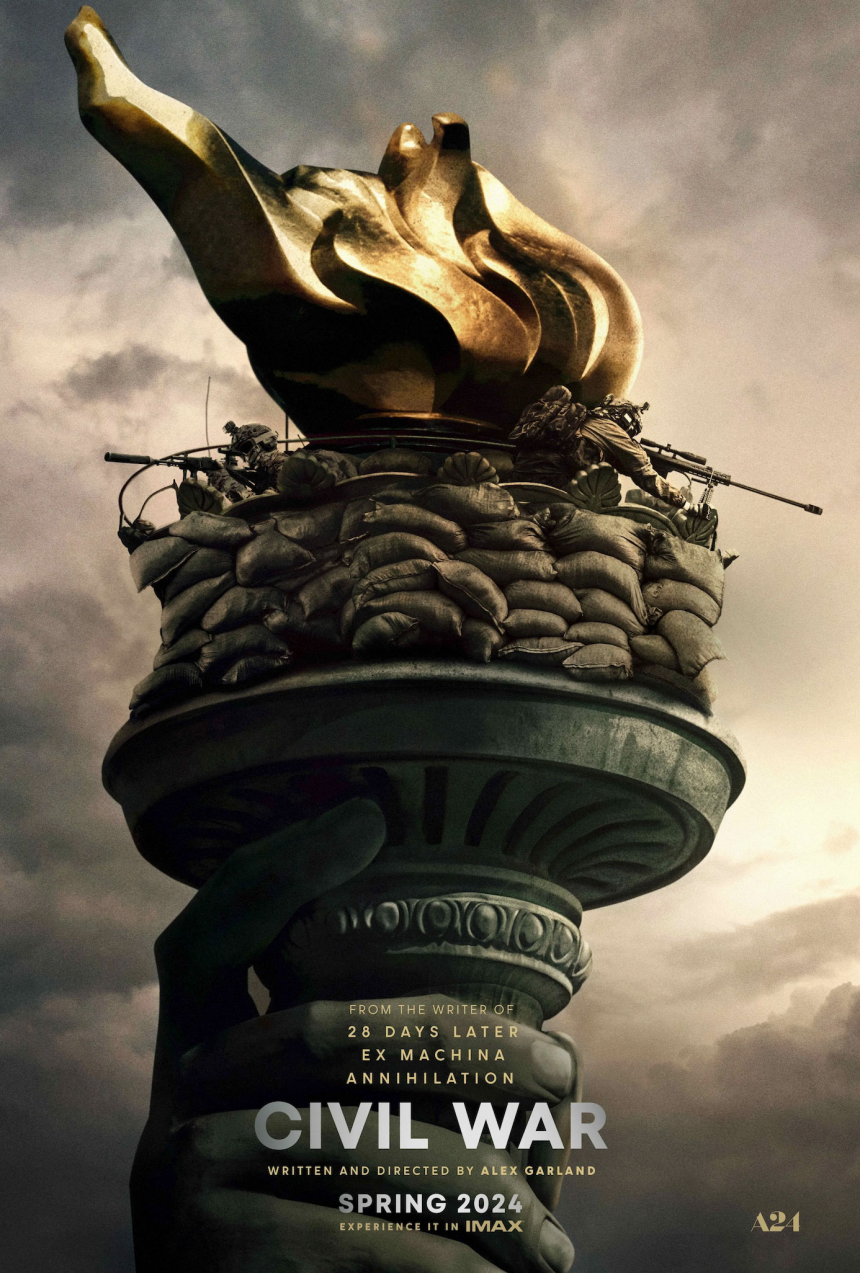April 15, 2024
“Civil War” Movie Review

On April 12, theaters saw the release of Alex Garland’s latest film, “Civil War,” depicting what a second American Civil War could look like were it to happen today or in the near future. The film follows war journalists as they race for the final battlefront in D.C. as the old government becomes overwhelmed by the secessionist armies of Texas and California as well as the greater “Western Forces.”
As the journalists (played by Kirsten Dunst, Wagner Moura, Cailee Spanley and Stephen McKinley) travel downwards from the relative safety of New York City to the war-torn capitol, the audience is given a chance to observe to what extent the ongoing civil war has affected different areas of the east coast, and more importantly, how it has affected the people who call it home.
These encounters grow more and more harrowing as the depravity and horror of war are put on full display. And while “Civil War" is without a doubt a political film, if one is looking for it to make strong partisan statements, it is perhaps best to look somewhere else.
Many saw the trailers, marketing and even the movie itself and expected “Civil War” to be a film that revels in its meticulous analysis of how a country like the United States would see itself plunged into an internal conflict. And people were not at all misguided to assume such.
Despite this, the film instead spends its rhetorical focus on how active conflict impacts human nature and experience, both in the moment and afterward, as it is shown how deeply scarred Kirsten Dunst’s character is by years of warzone coverage.
Additionally, the audience is treated to backdrops of family farm attractions turned into active combat zones, leaving a picture in viewers' heads of how war corrupts and leaves people needing to make hard decisions.
This environmental symbolism continues as the protagonists roll into a town kept relatively isolated from the nationwide conflict, its grasses green from ample watering and children playing around in the street. Garland’s directorial talent takes the full spotlight here as we are shown this arrival through a close-up lens of a sprinkler system at work, perhaps meant to mirror the missile tracers deployed in a conflict depicted the very night before.
Even in the film’s slower scenes, technical aspects such as the truly creative camera angles, ample sound design and convincing performances are more than enough to satiate audiences and keep them hooked.
Whether or not “Civil War’s" lack of direct political messaging would be enough to entice one to go and see the film in theaters, what it has to say about scenes happening at this very moment in other areas of the world (Gaza, Lebanon, Ukraine) is a strong enough throughline to carry its plot and narrative to a macabrely cathartic ending.
That is not to mention the surface-level triumph the film succeeds in with its depiction of urban combat scenes, which are easily some of the best ever put to screen.
What Alex Garland was able to accomplish with these military and guerilla engagements somehow feels so much more real than the majority of what's out there today, and is sure to leave viewers jumping out of their seats and gasping for breath.
“Civil War” will not be everyone’s film, and it’s important for viewers to note that they will be going into a nihilistically realistic political thriller with a dark view of the United State’s future. However, if that is stomachable, they will certainly be in for a thought-provoking and discomforting treat.
Rating: 4/5
Trip Tagle is a first-year majoring in digital and print journalism. To contact them, please email tnt5403@psu.edu.
Credits
- Author
- Trip Tagle